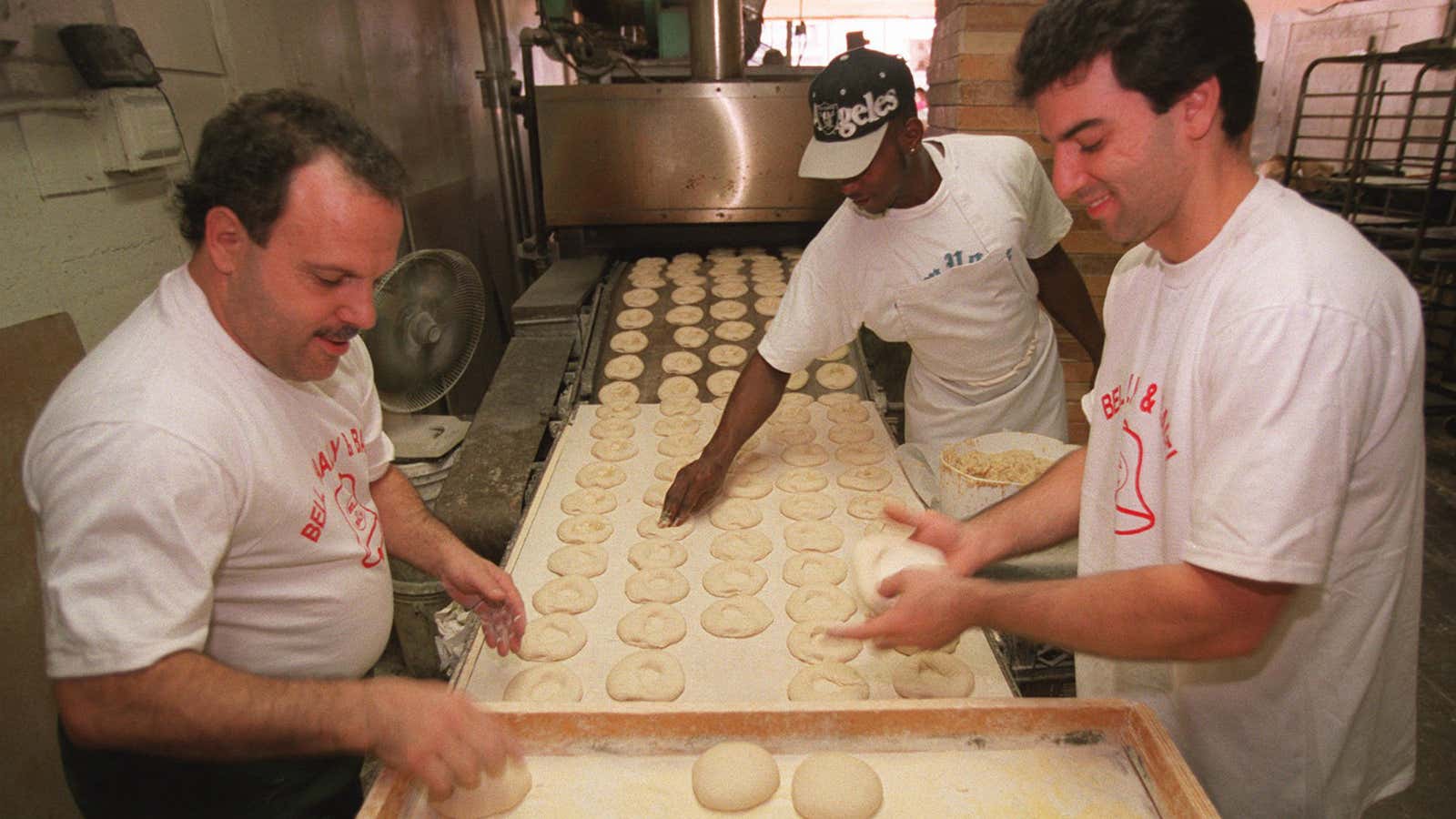CRACOW, Poland—Strolling through the streets of historical, old town Cracow you can’t help but be struck by countless little blue carts, sometimes within a hundred feet of one another, all selling the same thing:
Pretzels.
But not just any pretzels. Genuine Cracovian “obwarzanek” (ob-var-ZHA-nek).
Closer in taste to a bagel, they’re round with a hole in the middle, boiled then baked, and come in a choice of sesame, poppy, salt or cheese flavors.
And they’ve got special status thanks to the European Union’s “Protected Geographical Indication”—a form of trademark intended to “protect product names from misuse and imitation” insuring that locally specific foods like Parma ham and Dutch Gouda don’t have to compete with fakers and upstarts.
“We want to preserve the history of our culture,” says obwarzanek baker and city councilman Kazimierz Czekaj, the man instrumental in obtaining the special designation. “Every certified product is worth its weight in gold.”
Though at the equivalent of 60 US cents for every 120-gram pretzel, not quite.
The Cracovian pretzel can be dated back to 1394 when royal court documents listed the price for a “ring of obrzanka” for the Queen at 1 grosz. And in the late fifteenth century, King Jan Olbracht gave the Crackovian obwarzanek special rights to be sold within city walls.
The goal of gaining EU protection was to define what a vendor could legally call an “obwarzanek”—effectively trademarking the name of the pretzel. Gaining certification as “genuine Cracovian” would, in theory, increase the value of the product and protect traditional bakers against corner-cutting upstarts who might find more efficient, less traditional ways of producing counterfeit obwarzanki.
But is that really the case?
One of the primary conditions for calling an obwarzanek “genuine Cracovian” is that it be made by hand. There are an estimated 12 to 14 bakeries in Cracow making obwarzanki. All but one of them are hand-made operations.
Szubert Bakery is the exception. Maybe because it has been so attacked by Czekaj and the other bakeries, Szubert is a media-shy enterprise. Szubert denied requests for interviews or a factory tour. But its website boasts a video (Polish, only available to users in Poland) of the machine it has installed—at a reported cost of $1.2 million—to churn out the little bread rolls at impressive speeds.
Cracow baker Robert Lewandowski insists that machines can’t do what human hands can. Lewandowski worked in a bakery for 13 years before striking out on his own. Since 2002 he and his 15 employees have been boiling and baking 17,000 obwarzanki a night, seven nights a week.
In a fluorescent lit space about 40 by 40 feet, his staff stand around a large butcher-block table, breaking off eight-inch strips of dough, rolling them into twists under the palms of their hands, joining the ends and then tossing them to a guy at the far end of the table.
The dough rings are plunged into boiling water for five to 10 seconds and yanked back out. Then they’re doused with sesame seeds, poppy seeds, grated Parmesan or rock salt, and placed in an industrial oven to bake until, as the official rules state, they’re “light golden to dark golden or light brown with a distinct sheen.”
Lewandowski hasn’t laid eyes on Szubert’s machine. (He says he probably wouldn’t make it out of the factory alive since he’s Szubert’s No. 1 enemy.) When he first heard that Szubert was installing the thing, he says he couldn’t sleep for days he was so terrified it would put him out of business. But now he says the machine only creates something with the mere appearance of an obwarzanek. Worse, he says that the machine-made products (which cannot be called “genuine Cracovian”) all look troublingly uniform.
Mind you, Lewandowski can’t call his pretzels genuine either.
When the obwarzanki inspector showed up at his factory one day the man did something Lewandowski wasn’t expecting: he pulled out a scale. Officially, obwarzanki are required to register between 80 and 120 grams. Lewandowski’s weighed in at 140.
“I was trying making them lighter but it made a difference to customers,” he says. “They started complaining about the size. Too small, they said.”
It clearly pains his Cracovian pride not to have the certification. But it seems there’s not enough commercial value in being “official” to offset going back to a punier size.
Lewandowski isn’t alone in his thinking. Out of all the bakeries making obwarzanki, only two are officially certified up to snuff.
So why the need for EU protection if bakers and customers aren’t paying any attention? And what would happen if the protection weren’t there?
In the case of the obwarzanek, the answer may well be nothing at all. There is no news of bakeries in Warsaw or Chicago producing imitation Cracovian pretzels. And if the goal is to create an incentive that promotes culturally up-to-code obwarzanek, it appears that the demands of the consumer (for bigger bagels, for example) have the upper hand.
Maybe it’s just about conferring a touch of genuineness on the poor little pretzel.
For Kazimierz Czekaj, the EU certification remains the ultimate protection for a Cracovian tradition. Even if it’s fast becoming only a theory on paper.
But judging by the empty carts around Cracow at the end of every day, the obwarzanek—genuine or adulterated—isn’t in any danger of going extinct.
